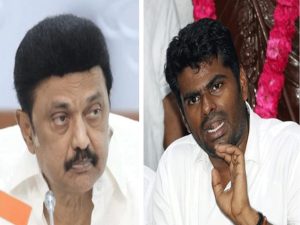
With “Munjya” being among the few Hindi films to feature CGI as the central character, director Aditya Sarpotdar opens up about the innovative process behind the character’s creation using animation and motion capture.
A still from the film highlights the pioneering work of VFX in the Indian film industry. The journey of “Munjya” began under the expert guidance of Producer Dinesh Vijan, who has steadfastly built his horror-comedy universe starting with “Stree” in 2018, followed by “Roohi” in 2021 and “Bhediya” in 2022. Joining this lineup, Aditya Sarpotdar’s “Munjya” steps up as the latest offering in this genre. Apart from starring talents like Abhay Verma and Sharvari, the true star of “Munjya” is its titular character, an entirely CGI-built entity, marking a significant milestone in Hindi cinema for placing a VFX creation at the forefront.
Director Aditya Sarpotdar comments, “This idea stemmed from the desire to push technological boundaries in Indian cinema and offer a unique visual experience.” This ambition took root back in 2019 when the conceptualization of “Munjya” began. The creative team sought the expertise of the esteemed visual effects studio DNEG and VFX supervisor Brad Minnich, known for his exemplary work on blockbuster films like “Batman v Superman” (2016), “Aquaman” (2018), and “Justice League” (2021).
In a focused effort spanning six months, the character of Munjya was meticulously developed. Described as a bald, big-eyed creature with wiry hands and rapid movements, Munjya embodies a blend of traditional folklore with cutting-edge technology. “We used advanced motion capture technology under the guidance of Brad. The team at DNEG and Brad helped me through the entire process, which involved conceptualization, motion capture, rigging, animation, texture, lighting, and composting,” reveals Sarpotdar.
Sarpotdar along with VFX expert Minnich have charted new territory in the Indian film landscape. As the project moved into production in 2023, it became evident that a hybrid approach would be crucial for seamlessly integrating the virtual and physical elements of the film. An actor was present on the set to serve as a proxy for the CGI character that would later be incorporated during the editing process.
. Reflecting on previous Vijan productions, it is clear that while the climax of “Bhediya” was realized entirely through VFX, “Munjya” extends beyond that by heavily relying on VFX throughout the film, thus advancing the scale and scope of visual storytelling in Hindi cinema.
“Munjya” draws its narrative from a well-known folklore from the Konkan region, which tells the tale of a Brahmin boy who, after his untimely demise, transforms into a mischievous spirit residing in a peepal tree. The integration of this culturally rich story with sophisticated technology not only pays homage to India’s mythological heritage but also elevates it through a modern lens. “What differentiates Munjya from its forerunners is that it draws from cultural myths and traditions. The familiar folklore evokes a primal fear rooted in collective cultural memory,” Sarpotdar shares.
Producer Dinesh Vijan’s vision has been to weave a horror-comedy fabric within the Indian cinematic context, each film contributing uniquely to the genre. With “Munjya,” they aim to tread new ground by deeply integrating technological advancements like CGI into the storytelling framework, bringing the supernatural elements of folklore to life like never before. Vijan’s collaboration with Aditya Sarpotdar and the VFX maestros at DNEG has proven to be a pivotal move towards redefining how narratives deeply embedded in Indian culture can be visualized and experienced by contemporary audiences.
The major challenge that lay ahead for the makers was to ensure that Munjya didn’t just appear as a digital gimmick but was perceived as an integral, emotionally resonant character. “The use of CGI should be more than just showcasing technical prowess. It’s about merging technology with storytelling to enhance the viewer’s emotional connection to the character and the narrative,” states Sarpotdar. The result is expected to be a seamless blend where art and technology coalesce, offering an immersive experience that stands as a testament to the evolving landscape of Indian cinema.
As Hindi cinema continues to evolve, “Munjya” sets a bold precedent for future filmmakers. The successful integration of advanced CGI techniques into traditional storytelling paves the way for more inventive and visually compelling narratives. Through “Munjya,” Vijan, Sarpotdar, and their team illustrate that the spirit of innovation in cinema lives on, marrying India’s rich cultural heritage with the limitless possibilities of modern technology.












